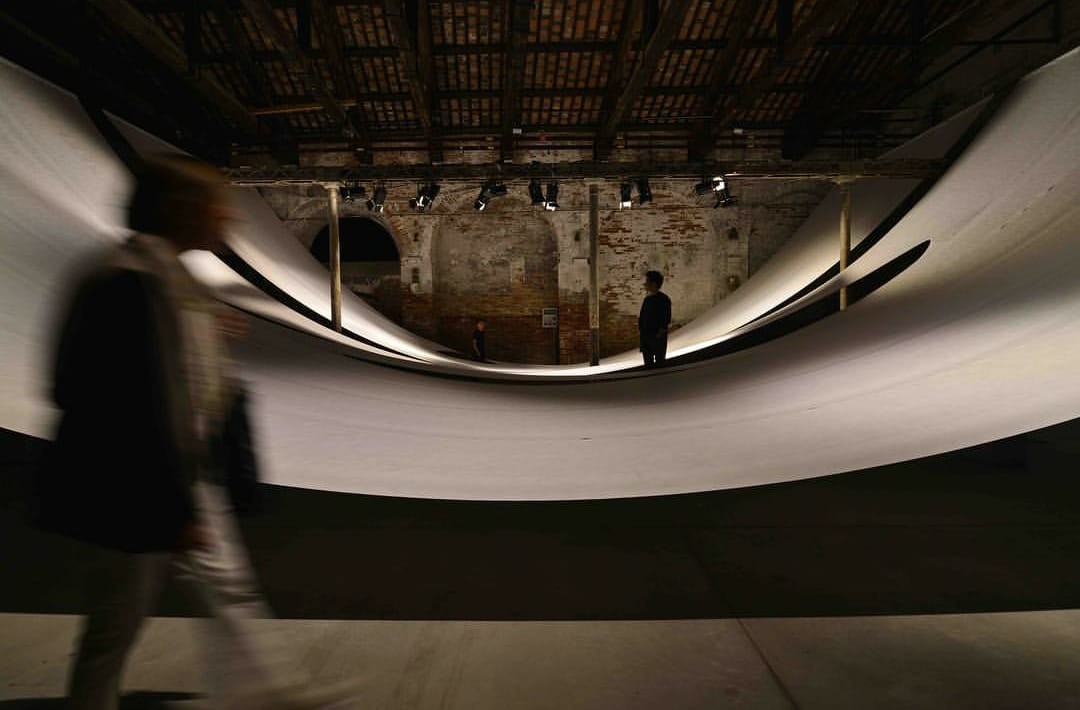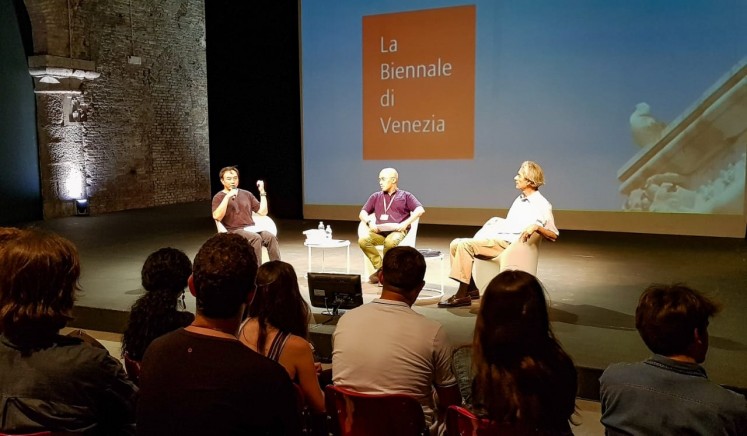Popular Reads
Top Results
Can't find what you're looking for?
View all search resultsPopular Reads
Top Results
Can't find what you're looking for?
View all search resultsIndonesian Pavilion in limelight at Venice Architecture Biennale
The installation Sunyata: The Poetics of Emptiness graces the Indonesian Pavilion at the Venice Architecture Biennale.
Change text size
Gift Premium Articles
to Anyone
A
rchitects from around the globe attended an event in Venice, Italy, called Meeting on Architecture: The Tale of the Void. The event, taking place at the Indonesian Pavilion earlier this month, was held in conjunction with the Venice Architecture Biennale.
The chief curator of the Indonesian Pavilion, Ary Indra, was the panelist, alongside Renato Rizzi, an Italian architect, practitioner and lecturer from the University of Venice’s School of Architecture.
The Indonesian Pavilion is located at the Teatro alle Tesse. It hosts Sunyata: The Poetics of Emptiness, an installation created according to this year’s biennale theme: Freespace.
Ary explained that Sunyata translates frees pace into the philosophy of emptiness, commonly known as suwung by the Javanese people. Suwung is a concept of deep influence, often packed with spirituality and the existence of a ‘different energy’.
“Void in traditional architecture of the archipelago is a well-known concept and widely applied to buildings in response to geographical challenges. It is also a way to give space to ritual needs and the need to interact with other human beings,” Ary was quoted as saying in a released statement.
In response to Sunyata, Renato said architecture was derived from the words “arche” and “techne”. Arche is related to intangible materials, and techne to tangible materials. The problem was, he said, that lately humans tended to rely on tangible materials.
Renato went on to say that people would rather forget or even reject intangible materials, as a result of their unwillingness to think and of the powerful drive to dominate over others.
“Humans are now in an awful period, where they agree that technology is very much needed as a means to dominate and gain control over others,” said Renato. This situation put humans in a restraint, where they failed to grasp that there were things more valuable and powerful but not dominating - arche.
He went on to say that since arche was an intangible material, its value could not be measured, yet it was so powerful that we called it grace. The latter could only be present in a singular individual that was aware of himself or herself, and it was unique to each individual.
The theme freespace he added was based on the expectation that humans could retreat from the hustle and bustle of their material, worldly need for technology. They should take a quiet moment to contemplate, to give each individual a moment to delve into their tangible and intangible sides, and make use of them in balanced proportion.
Boni Pudjianto, director of foreign market development at the Creative Economy Agency (Bekraf), said the agency hoped to encourage Indonesian architects to showcase their works at international events. He said that in the end, people from other parts of the world should get to know the philosophy of Indonesian architecture, which was often rooted in the cultures of the archipelago.
Read also: Indian architecture laureate Doshi has no plans to slow down
Admiration for the installation showcased at the Indonesian Pavilion came, for instance, from Albert Wang, architecture professor from the University of Florida, US, and from blogger Christiane Bürklein.
Albert said the pavilion showcased the expression of Sunyata or the void very well.
“Modern humans have been enslaved by technology and materials. The concept of void reminds us and gives us a chance to welcome moments and emptiness as forms of self-contemplation, before materialism and technology overpowers communal life,” he was quoted as saying.
Meanwhile, Christiane said the Indonesian Pavilion left a deep impression of the concept of emptiness, but it also embodied a sense of intimate relationship.
The curator for the Indonesian Pavilion at Venice Architecture Biennale had been selected by Bekraf last year. And Indonesia’s participation at this event aims at new opportunities to understand the wealth of Indonesian architecture for the advancement of science and practice. (mut)












